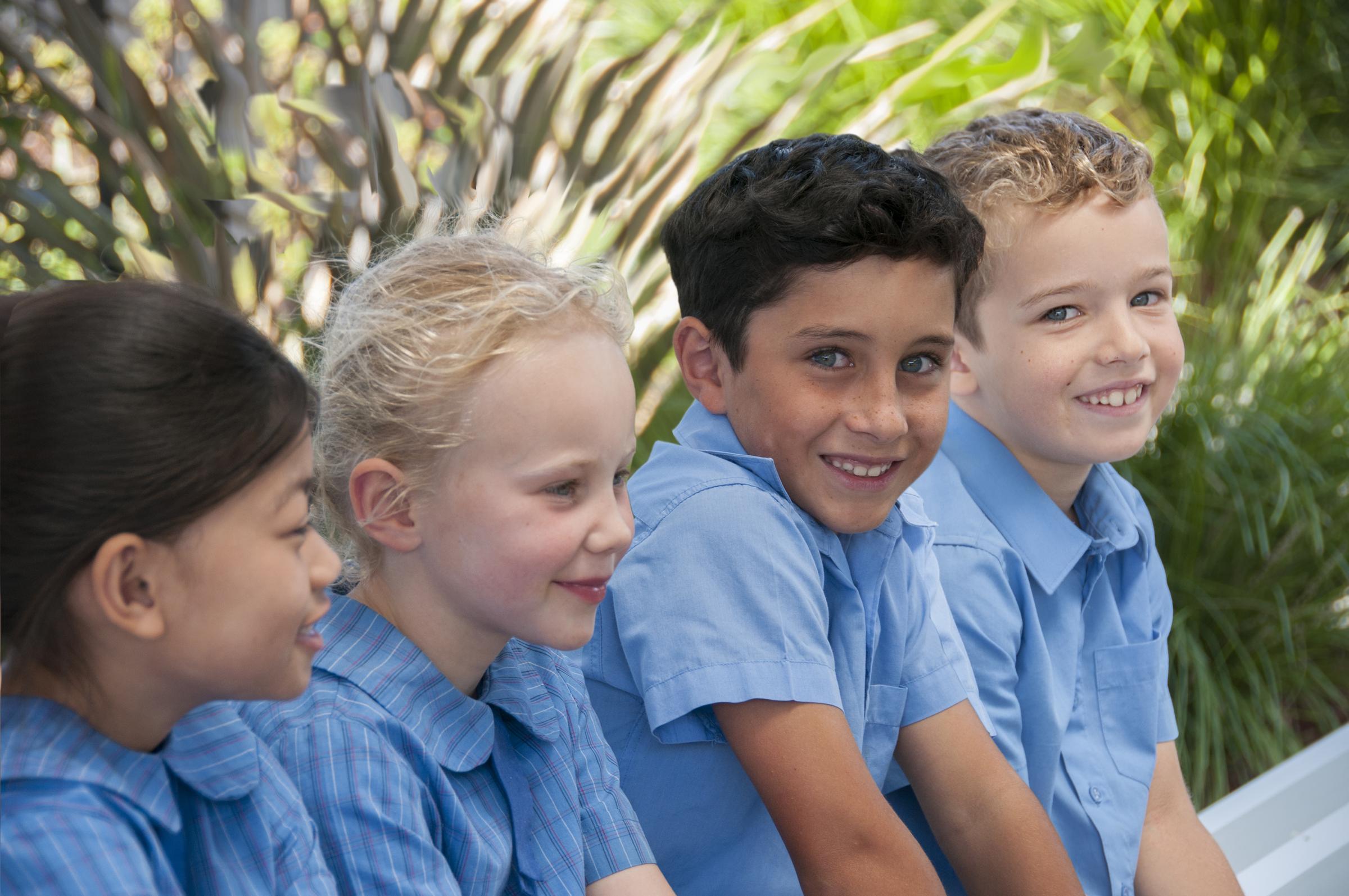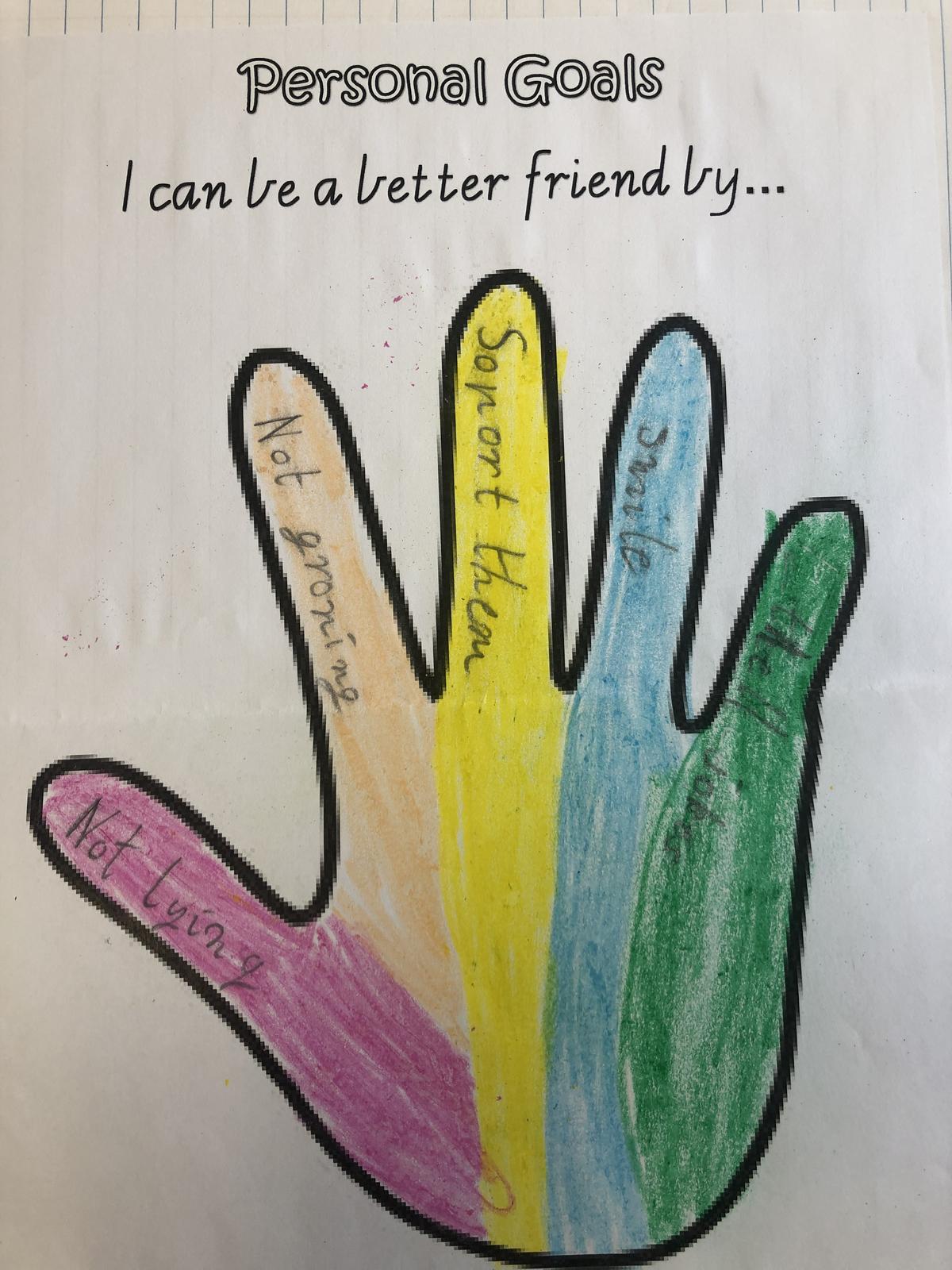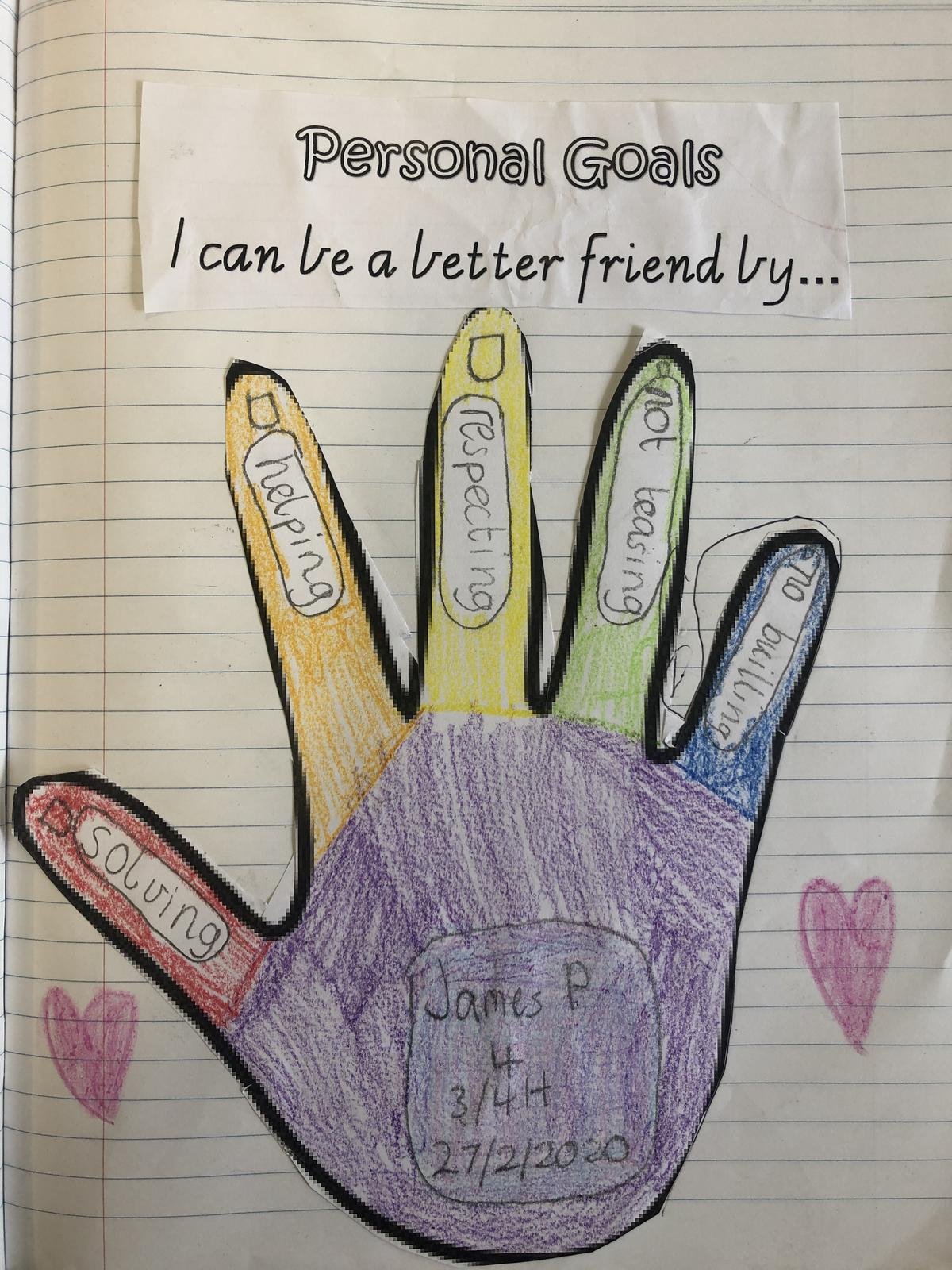
Student Wellbeing News
Spotlight: Year 3/4 Community
Focus: CASEA
In Wellbeing, students have been learning about the 'Stop, Think, Do' strategy. When the students encounter a problem, students are to stop, think about their options for problem solving and do the best problem solving strategy. We practiced using this strategy for everyday scenarios.
We discussed how to identify a good friend and used the analogy of cactus friends versus flower friends. You shouldn't get too close to cactus friends because you might get hurt, while flower friends will help you to bloom. We came up with personal goals for ourselves, to make sure that we are all flower friends.
Personal goals are by Kingston and James P.
Topic: Bullying
Definition of bullying: Bullying is an ongoing and deliberate misuse of power in relationships through repeated verbal, physical and/or social behaviour that intends to cause physical, social and/or psychological harm. It can involve an individual or a group misusing their power, or perceived power, over one or more persons who feel unable to stop it from happening.
Bullying can happen in person or online, via various digital platforms and devices and it can be obvious (overt) or hidden (covert). Bullying behaviour is repeated, or has the potential to be repeated, over time (for example, through sharing of digital records). Bullying of any form or for any reason can have immediate, medium and long-term effects on those involved, including bystanders.
What bullying is not
- single episodes of social rejection or dislike
- single episode acts of nastiness or spite
- random acts of aggression or intimidation
- mutual arguments, disagreements or fights.
These actions can cause great distress. However, they do not fit the definition of bullying and they’re not examples of bullying unless someone is deliberately and repeatedly doing them.
Emotional and behavioural signs of bullying
- Changes in sleep patterns
- Changes in eating patterns
- Frequent tears or anger
- Mood swings
- Feels ill in the morning
- Becomes withdrawn or starts stammering
- Becomes aggressive and unreasonable
- Refuses to talk about what is wrong
- Begins to target siblings
- Continually 'loses' money or starts stealing.
Physical signs of bullying
- Has unexplained bruises, cuts, scratches
- Comes home with missing or damaged belongings or clothes
- Comes home hungry.
Other signs of bullying
Sometimes signs of bullying can be far more hidden. They can include:
- Often alone or excluded from friendship groups at school
- A frequent target for teasing, mimicking or ridicule at school
- Unable to speak up in class and appears insecure or frightened.
The big question is- how to stop bullying?
The first recommended step is to try to get your child to open up about what's happening in their life by showing them that you understand and won’t judge them.
Listen
Encourage your child to tell you the whole story. Listen calmly and without interrupting, and reassure them that they've done the right thing by speaking up. Your child may need to tell the story more than once.
Talk
Have a conversation about what happened. Try not to let your very understandable emotions (anger, distress...) show. Your feelings can intensify the child's or make it worse for them and might even deter your child from talking to you another time. Remind your child that bullying is never OK, and that whatever they are feeling – e.g. hurt, scared, sad, angry – is understandable and normal. Ask your child what they would like to happen. Often all they want to know is how to stop the bullying. Children may feel that if the perpetrator is punished, it will be worse for them in the long run.
Find out what is happening
Note what, when and where the bullying occurred, who was involved, how often and if anybody else witnessed it. Don't offer to confront the young person or their parents yourself. This might make things worse for your child.
Contact your child's school
Bullying arises from social situations - family, school, clubs, and work - and if possible, cases of bullying are best dealt with where they occur. Don't assume the school will know about the situation because your child may not have told them. The majority of children and teenagers do not disclose to teachers or parents. Schools are keen to prevent and stop bullying behaviour.
Haylea Anderson
Student Wellbeing Leader



